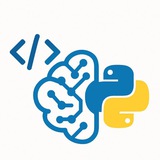Tip for clean code in Python:
Use Dataclasses for classes that primarily store data. The
#Python #CleanCode #ProgrammingTips #SoftwareDevelopment #Dataclasses #CodeQuality
━━━━━━━━━━━━━━━
By: @CodeProgrammer ✨
Use Dataclasses for classes that primarily store data. The
@dataclass decorator automatically generates special methods like __init__(), __repr__(), and __eq__(), reducing boilerplate code and making your intent clearer.from dataclasses import dataclass
# --- BEFORE: Using a standard class ---
# A lot of boilerplate code is needed for basic functionality.
class ProductOld:
def __init__(self, name: str, price: float, sku: str):
self.name = name
self.price = price
self.sku = sku
def __repr__(self):
return f"ProductOld(name='{self.name}', price={self.price}, sku='{self.sku}')"
def __eq__(self, other):
if not isinstance(other, ProductOld):
return NotImplemented
return (self.name, self.price, self.sku) == (other.name, other.price, other.sku)
# Example Usage
product_a = ProductOld("Laptop", 1200.00, "LP-123")
product_b = ProductOld("Laptop", 1200.00, "LP-123")
print(product_a) # Output: ProductOld(name='Laptop', price=1200.0, sku='LP-123')
print(product_a == product_b) # Output: True
# --- AFTER: Using a dataclass ---
# The code is concise, readable, and less error-prone.
@dataclass(frozen=True) # frozen=True makes instances immutable
class Product:
name: str
price: float
sku: str
# Example Usage
product_c = Product("Laptop", 1200.00, "LP-123")
product_d = Product("Laptop", 1200.00, "LP-123")
print(product_c) # Output: Product(name='Laptop', price=1200.0, sku='LP-123')
print(product_c == product_d) # Output: True
#Python #CleanCode #ProgrammingTips #SoftwareDevelopment #Dataclasses #CodeQuality
━━━━━━━━━━━━━━━
By: @CodeProgrammer ✨
❤4🎉1
Stochastic and deterministic sampling methods in diffusion models produce noticeably different trajectories, but ultimately both reach the same goal.
Diffusion Explorer allows you to visually compare different sampling methods and training objectives of diffusion models by creating visualizations like the one in the 2 videos.
Additionally, you can, for example, train a model on your own dataset and observe how it gradually converges to a sample from the correct distribution.
Check out this GitHub repository:
https://github.com/helblazer811/Diffusion-Explorer
👉 https://t.me/CodeProgrammer
Diffusion Explorer allows you to visually compare different sampling methods and training objectives of diffusion models by creating visualizations like the one in the 2 videos.
Additionally, you can, for example, train a model on your own dataset and observe how it gradually converges to a sample from the correct distribution.
Check out this GitHub repository:
https://github.com/helblazer811/Diffusion-Explorer
Please open Telegram to view this post
VIEW IN TELEGRAM
Please open Telegram to view this post
VIEW IN TELEGRAM
❤1
